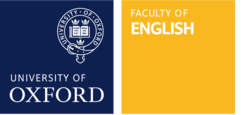Writing the Stuart successions

After The Favourite, starring Olivia Colman as Queen Anne, cleaned up at the Baftas, Professor Paulina Kewes of Oxford's Faculty of English and Jesus College talked to Oxford Arts Blog about why the Stuart dynasty remains so fascinating. Professor Kewes' new book, Stuart Succession Literature: Moments and Transformations, was launched last month, published by OUP.
Why is the Stuart period of such enduring interest?
The Stuart era gave shape to modern Britain. Britain’s political and constitutional foundations were forged between the accession of the first Stuart monarch of England, James I, in 1603 and the death of the last one, Queen Anne, in 1714. The Anglo-Scottish union, the emergence of political parties, and the law which still regulates the order of royal succession today were all products of this period, which also witnessed the only years of republican rule in the nation’s history. By its end, Britain stood as an international force in the world of trade and empire: it was on the way to becoming a superpower, while social and economic change at home had transformed the lives of citizens. The Stuart Age also saw extraordinary cultural achievement: from Shakespeare to Milton, the playhouse to the opera. The ubiquity of print democratised information and culture alike.
The transition from the Tudors to the Stuarts in 1603, when the Scottish king James VI ascended the English throne as James I, is especially fascinating. Few realise just how fraught the preceding years had been, and how fiercely contested was the Stuart claim. After all, Elizabeth had condemned James’s Catholic mother, Mary Stuart, to the block. Josie Rourke’s recent film Mary Queen of Scots concludes with the shadowy image of King James. How and why did it come to pass that he managed to ascend the English throne unopposed despite the historic rivalry between England and Scotland, and, more to the point, despite the execution of his mother by the English? What did James’s new subjects make of their Scottish king whom virtually none of them had ever seen before, and how did he work to reassure them? Printing presses in London churned out poems of praise, genealogies, sermons, succession tracts, addresses and ballads welcoming the new monarch and counselling him on how to rule. There were numerous engraved likenesses of James. Enterprising publishers hastily issued editions of his own prolific writings on monarchy and governance, religion, poetry and many other topics. For how else would his subjects get to know him?
The first Stuart succession in 1603 appeared to promise dynastic continuity: after all, James arrived in his new capital with an heir and two spares. Yet the Stuarts’ rule came to an end a little over a century later, on the death of James’s great grand-daughter, Queen Anne. Yorgos Lanthimos’ recent award-winning film The Favourite, starring Olivia Colman, may take considerable liberties with the historical record. But it nonetheless gives an imaginative insight into Anne’s queenship. Here is a monarch who, hailed as the new Elizabeth on her accession in 1702, takes the country to victories abroad. Both queens triumphed over Catholic powers: Elizabeth over the Spanish Armada, Anne over France. Yet, also like Elizabeth, Anne left no heir, though not for lack of trying. Following numerous miscarriages, stillbirths, and the death of her young son the Duke of Gloucester, Anne knew that another dynasty would rule after her: the 1701 Act of Settlement, still in force today, excluded Catholics from claiming the crown – and the only Stuarts left at that point were Catholic. Just as the Scottish Stuarts had followed Elizabeth, so the German Hanoverians came after Anne. Neither transition was expected to go smoothly. And yet, both happened without major incident. But the end of the Stuart line spelled the end of royal power: after 1714, sovereignty lay with Parliament, not the monarch.
How did your new book on Stuart succession literature come about?
The volume was inspired by a simple question: what was the public response to regime change in the Stuart era? And, since print publications and material objects such as coins and medals provide the amplest and most readily accessible record of such responses, we decided to commission essays scrutinising them from a variety of disciplinary perspectives.
This was a novel undertaking in several respects. First, because of our broad definition of Stuart succession literature: instead of confining ourselves to strictly literary works such as poems and plays, we decided to look at all sorts of printed matter: sermons, genealogies, ballads, polemical tracts, parliamentary speeches, newsbooks, libels; indeed, in order to get a better sense of the sheer volume of relevant materials, we compiled a database of succession writings printed within two years of each regime change occurring between the first and last Stuart accessions. Second, because of our extensive chronological span: scholars have traditionally focused either on the early or the late Stuart era or else on the revolutionary 1640s and 50s; we decided to trace continuity and change over the ‘Long Seventeenth Century’, from 1603 until 1714. Third, because the volume combines this diachronic approach with a synchronic one, with several chapters examining the public reaction to particular political transitions, for instance the accession of James I, or the installation of Oliver Cromwell as Lord Protector, or the Restoration of the Stuart monarchy in 1660. This double perspective underpins the structure of the book, which consists of two parts, ‘Moments’ and ‘Transformations’.
'Part I: Moments' explores how imaginative writers, divines and polemicists responded to successive regime changes. Here, alongside poems and sermons by major authors such as Daniel, Jonson and Donne, we encounter previously neglected genres (libellous pamphlet, prose romance) and viewpoints, for instance those of various religious groups or foreign commentators. Individual chapters consider, respectively: the poems which greeted the arrival of the first Stuart king, James I; the scandalous pamphlets surrounding James’s alleged poisoning which overshadowed the succession of his son, Charles I; the ambiguous and ambivalent print reception of the two Protectoral accessions; the ostensibly celebratory writings welcoming Charles II upon his return from prolonged Continental exile in mostly Catholic countries which voiced sharp anxieties about his religion; the Dutch print campaign centring on Charles’s Catholic brother James II; the complex imaginative justifications of the Revolution of 1688-9; and the extraordinary outpouring of print upon the accession of the last Stuart monarch, Queen Anne. It may come as a surprise to many to learn that one could buy a ticket to Westminster Abbey to watch the coronation of James II and his wife Mary of Modena in 1685, or of Queen Anne in 1702. Or that Isaac Newton designed Anne’s coronation medal, smuggling a subtle political message through its iconography.
'Part II: Transformations' deals with changing genres of succession literature (political tracts, royal panegyrics, sermons, prose addresses) and iconography of material forms (medals, coins, triumphant arches erected for coronation entries). The upshot is a signal revision of how those genres and forms were previously understood. For instance, we find that an explosive tract by an Elizabethan Jesuit was repeatedly appropriated by republican and Whig enemies of the Stuarts; that accession panegyrics, especially those aimed at monarchs arriving from elsewhere – James I, Charles II, and William II and Mary II – showed considerable reservations about royal authority; that accession sermons, including that by John Donne, spoke to the anxieties of a nation in transition; that the universities of Cambridge and Oxford issued highly charged volumes of poetry commemorating the deceased ruler and welcoming his or her successor; that Stuart coronations in Scotland, notably Charles I’s in 1633 and Charles II’s in 1651, bred intense anxiety in England; and that royal entries into the City of London, accompanied by elaborate pageantry and vividly described and illustrated in print, provided complex and multifaceted opportunities for exchange between the new monarch and his subjects. (The male pronoun is correct: neither Queen Mary II nor Queen Anne had a ceremonial entry into the capital.)
Overall, Stuart literature and culture emerge from our book as far more diverse, dynamic and engaged with both individual dynastic transitions and longer-term political transformations than has been recognised.
What are some of the most notable works of literature inspired by Stuart successions, and what kinds of features characterise these works?
Stuart successions inspired some of the finest literary works in English. It is often forgotten that Shakespeare was a Stuart author for much of his writing career. While several of his plays composed after the Jacobean succession subtly responded to that event offering complex meditations on kingship and the relations between rulers and ruled, it is Macbeth and King Lear – both in 1606 – that most explicitly address the proprieties of royal succession and the issue of Anglo-Scottish union. Both tragedies drew on remote, often mythic history to tackle concerns about the scope of royal power or the relative stature of the two nations; yet they did so in a way that precludes simple reading of them as tributes to the nascent Stuart monarchy. John Milton’s Paradise Lost (1667), published several years after the Restoration, which he had passionately opposed, was an imaginative response to it, even if Milton transposed his political preoccupations on to a cosmic level and, like Shakespeare, avoided making them transparent.
Other canonical authors – as well as a host of lesser lights – produced diverse imaginative and polemical works touching upon one or more Stuart or Protectoral successions. Ben Jonson extolled James I in his elegant panegyric which implicitly criticised Elizabeth pleading for a more tolerant attitude to Catholic dissent; Jonson also contributed to the City’s spectacular ceremonial welcome of the new king. John Donne preached a complex, allusive sermon on the accession of Charles I. Both John Dryden and Andrew Marvell commemorated the death of Oliver Cromwell, Dryden then going on to eulogise the freshly restored Charles II and soon winning the position of Poet Laureate and Historiographer Royal. Aphra Behn, the first professional female playwright, made crystal clear her Tory sympathies in a poem marking the coronation of James II and another celebrating the birth of his son, the Prince of Wales.
Far from being mere ephemeral pieces, such writings demonstrate the challenges of public political engagement. Our book brings to the fore the sophistication and variety of tone, style and expression with which their authors sought to influence both the ruler and the increasingly polarised nation. Whenever the transition to a new monarch occurs in Britain, it will generate an immediate multimedia response both in Britain and globally. The newspaper articles, television and radio programmes, images, films and YouTube videos that will accompany a change of monarch in the 21st century are the modern equivalents of the early modern succession literature examined in this book.
As well as editing the volume, you’ve contributed one of the book’s chapters...
My essay explores the shocking afterlife of a polemical tract by an Elizabethan Jesuit. Printed abroad in 1595 and swiftly smuggled into the country, Robert Persons’ A Conference about the Next Succession to the Crowne of England sought to derail the accession of the Protestant James Stuart. Its argument was deeply subversive. Feigning impartiality and lack of religious bias, the Jesuit made a case for the subjects’ right to resist an unsatisfactory ruler and exclude even the most legitimate successor. He advocated elective monarchy which gave the right of choice to the people. While Persons failed to avert the Jacobean succession, his tract proved immensely attractive to later opponents of the Stuarts. Several of them owned copies of the original edition; there were also surreptitious adaptations and a complete reprint in 1681: John Locke, among others, had it in his library. Both the Commonwealth-men who overthrew the monarchy and executed Charles I and the Whigs who toppled his Catholic son James II are shown to have drawn liberally on Persons’s 'Conference'. It is no exaggeration to say that the ideological underpinnings of the ‘Glorious’ Revolution can be traced back to this scandalous Catholic text.



